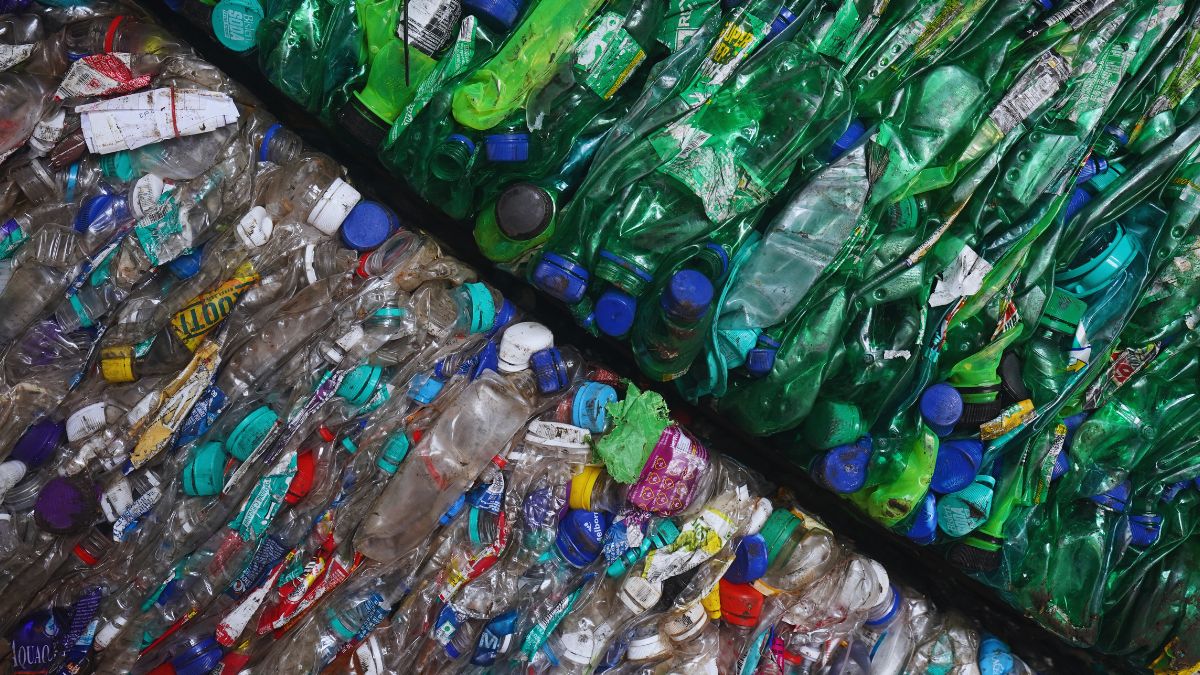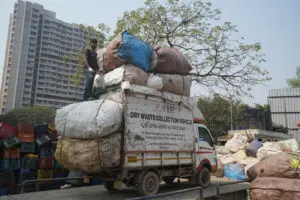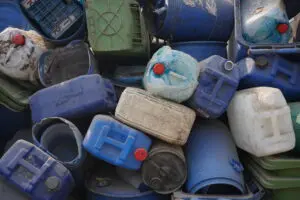Plastic pollution remains one of the gravest environmental challenges worldwide and India is no exception. The Government of India first introduced the Plastic Waste Management Rules in 2016 to control plastic pollution by setting recycling targets, responsibilities, and penalties for producers, importers, and brand owners. Over the years, these rules have been amended multiple times to increase their effectiveness.
The most significant update came in June 2025 when the Ministry of Environment, Forest and Climate Change (MoEFCC) notified new amendments aimed at improving transparency, traceability, and compliance mechanisms within the plastic waste management system. In this blog, every element of the 2025 amendments will be explained to provide a full understanding of what has changed and how companies must now operate to remain compliant.
Background: Why Amend the Plastic Waste Management Rules Again?
Since the first rules in 2016, India’s plastic consumption and waste have continued to grow. The original rules focused on Extended Producer Responsibility (EPR), mandating that producers and importers take responsibility for collecting and recycling the plastic waste generated by their products. Nevertheless, challenges persisted:
- Tracking and verifying compliance was difficult.
- Importers were not sufficiently accountable for plastic packaging.
- Food packaging and technical exemptions complicated universal targets.
- Data collection and transparency were inadequate.
The 2025 amendments seek to close these gaps by institutionalising complete traceability through a centralised online portal and by ramping up recycled content and reuse targets for all stakeholders, including importers and brand owners.
What Are the Key 2025 Amendments? A Deep Dive
1. Recycled Plastic Content Targets
The amendments introduce mandatory, category-wise year-on-year targets for recycled plastic in packaging. This measure is the backbone of promoting circularity in the plastic economy.
Who Does This Affect?
- Producers of plastic packaging.
- Importers bringing plastic packaging into India.
- Brand owners use plastic packaging for their products.
Categories of Packaging
Plastics are divided into three categories for ease of regulation:
- Category I: Rigid packaging, like bottles and containers.
- Category II: Flexible packaging (films and bags).
- Category III: Other packaging types not covered in I or II.
Year-wise Recycled Content Obligations
| Year | Category I | Category II | Category III |
| 2025-26 | 30% | 10% | 5% |
| 2026-27 | 40% | 10% | 5% |
| 2027-28 | 50% | 20% | 10% |
| 2028-29+ | 60% | 20% | 10% |
These percentages represent the minimum recycled plastic required in packaging material annually.
Exemptions Allowed
- If regulatory laws prohibit the use of recycled material (statutory reasons).
- If use of recycled material compromises product integrity (technical reasons).
- Exemptions are granted case-by-case by the CPCB on sufficient proof.
Companies must clearly justify exemption needs, ensuring this is not abused to limit progress toward circular plastic use.
Special Provisions for Food Packaging
Food contact materials are subject to strict safety rules. Hence, the 2025 amendments allow companies to carry forward shortfalls from the recycled content targets for up to three years (i.e., they can make up deficits accumulated from 2025-26 to 2028-29).
2. Inclusion of Importers in Responsibilities
Importers now have the same obligations as producers under plastic waste management rules.
- They must meet recycled content targets similar to producers for all packaging categories.
- The recycled content in imported plastic itself does not count for obligations. Companies must effectively “buy” recycled plastic credits within India’s compliance system.
- Exemptions for statutory or technical reasons and carry-forward rules for food packaging also apply equally.
3. Brand Owner Obligations: Reuse and Recycled Content
Brand owners have dual responsibilities under the amendments:
A. Reuse of Rigid Plastic Packaging
Brand owners using Category I (rigid) plastics must meet minimum reuse targets according to packaging size and product type.
| Packaging Size & Type | 2025-26 | 2026-27 | 2027-28 | 2028-29+ |
| 0.9 to <4.9 litre/kg rigid packaging | 10% | 15% | 20% | 25% |
| ≥4.9 litre/kg rigid packaging (drinking water) | 70% | 75% | 80% | 85% |
| ≥4.9 litre/kg rigid packaging (other than water) | 10% | 10% | 15% | 15% |
Reuse target percentages represent the annual minimum amount of packaging material that must be reused rather than disposed of.
B. Recycled Plastic Content in Packaging
- Brand owners must also comply with year-wise recycled content targets for all categories (same as producers and importers).
- Statutory/technical exemptions and carry-forward from 2025-26 shortfalls apply here as well.
4. Creation of a Centralised Online Portal
To improve transparency and traceability, all producers, importers, and brand owners must register and report on a digital portal managed by the CPCB.
Portal Functions:
- Record weight of virgin, recycled, and reused plastic used.
- Track purchase and sale of EPR (Extended Producer Responsibility) certificates.
- Provide real-time data access to regulators for audits.
- Maintain a clear online record that enhances compliance monitoring and enforcement.
The portal brings a much-needed digital backbone to the Plastic Waste Management framework.
5. EPR Certificates and Credit Trading
The amendments formalise a system of EPR certificates:
- Entities exceeding obligations generate credits.
- Those unable to fully comply can acquire certificates from others.
- All transactions are recorded on the portal for full auditability.
This system encourages shared responsibility across the industry and prevents evasion of duties.
6. Reporting and Compliance
Entities must submit annual reports through the portal covering:
- Plastic packaging quantities produced, imported, or brought to market.
- Proportion of recycled content used.
- Volume of packaging reused (for brand owners).
- Certificates bought/sold to meet targets.
- Exemption approvals obtained.
Accurate and timely reporting is mandatory to comply with the plastic waste management rules.
7. Application Process for Exemptions
To apply for statutory or technical exemption, entities must:
- Submit formal requests to the CPCB via the portal.
- Provide supporting evidence like regulatory barriers or technical limitations.
- Await approval before exempted targets are adjusted.
8. Legal Framework and Public Consultation
- This notification is part of the Plastic Waste Management (Second Amendment) Rules, 2025.
- It comes into effect on publication in the Gazette but allows 60 days for public objections or suggestions.
- Comments can be sent to the Ministry of Environment, Forest and Climate Change.
Public participation improves policy acceptance and effectiveness.
How These Amendments Impact Businesses
Increased Accountability
Companies are now more accountable for their packaging than ever before. The central portal creates a transparent platform which regulators and the public can scrutinise.
Need for Robust Internal Tracking
Businesses must invest in systems to segregate and measure virgin vs recycled material, track reused plastics, and manage certificate trading.
Planning Ahead for Targets
Given fixed year-wise targets, companies must prepare their supply chains to source recycled content and create reuse programmes.
Cost Implications
- Increased recycled content may affect packaging costs.
- Participation in certificate trading creates a new financial market risk and opportunity.
- Non-compliance penalties will motivate businesses to meet or exceed targets.
Transparency and Traceability: The Core Benefits
These amendments bring India’s plastic waste management up to date with global standards by:
- Creating clear measurable targets.
- Ensuring full disclosure of compliance data.
- Establishing a marketplace to smooth out hard-to-meet targets.
- Making it difficult to hide or falsify information.
This will ultimately improve environmental outcomes and public trust.
Special Case: Food Packaging and Safety
Recognising the concerns around food-contact packaging, the rules balance safety with sustainability by permitting carry-forward exceptions for three years and strictly regulating exemptions.
Timeline Summary
| Year | Major Requirements |
| 2025-26 | Start of recycled content and reuse targets |
| 2026-27 | Increase recycled content for Categories I and III |
| 2027-28 | Further increases; start 20% Category II recycled content |
| 2028-29+ | Full targets realized (60% recycled content Category I, etc.) |
Conclusion
India’s 2025 amendments to the plastic waste management rules represent a thorough, state-of-the-art approach to handling plastic pollution. From detailed recycled content targets to the digital compliance portal, these changes emphasise transparency, accountability, and long-term sustainability.
Businesses, importers, and brand owners now face clear responsibilities, complete with annual reporting and the ability to trade compliance credits fairly. With strong enforcement and public oversight, India is poised to lead on plastics circularity in the years ahead.
Preparing for a Circular Future
As India moves toward more stringent waste governance, the demand for transparency, traceability, and circular accountability in waste management will only rise. That’s where ReCircle comes in.
At ReCircle, we combine deep domain expertise, a nationwide recovery network, and a technology backbone (ClimaOne and end-to-end traceability) to deliver sustainable waste solutions. We already support leading brands in India with EPR, plastic-neutral programmes, textile recycling, and robust impact reporting.
If your company aspires to lead and not lag in compliance, circular design, and sustainable operations, we’re ready to partner with you. Let us handle the technical details while you focus on your core strength.
ReCircle: your partner in turning waste into value, with integrity every step of the way.
Frequently Asked Questions (FAQs) on 2025 Plastic Waste Management Rules Amendments
Q1. What are the main goals of the 2025 amendments to the Plastic Waste Management Rules?
The amendments aim to increase the use of recycled plastics in packaging, improve reuse of rigid plastics, bring importers under the same rules as producers, and introduce a central online portal for transparent tracking of compliance. These changes enhance accountability, traceability, and overall plastic waste reduction in India.
Q2. Who is affected by the new rules?
Producers, importers, and brand owners of plastic packaging are all responsible under the amended rules. They must meet yearly recycled plastic content targets, reuse rigid plastic packaging where applicable, and report details through the central portal.
Q3. What are the recycled plastic content targets?
Targets are set category-wise and increase each year from 2025-26 to 2028-29 onward. For example:
- Category I packaging must include 30% recycled plastic in 2025-26, rising to 60% from 2028-29.
- Categories II and III have lower but rising targets.
Q4. Are there any exemptions from these targets?
Yes, exemptions are allowed for statutory reasons (e.g., other laws banning recycled plastic use) and technical reasons (where recycled plastic would spoil the product). Every exemption request must be approved by the Central Pollution Control Board.
Q5. How are importers impacted?
Importers must meet the same recycled content targets as producers, but recycled content in imported packaging does not count towards obligations. They can buy certificates from businesses that exceed their targets to meet obligations.
Q6. What are brand owners required to do?
Brand owners must meet minimum reuse targets for rigid plastic packaging annually and also comply with recycled content targets. They also have access to exemptions and carry-forward provisions as producers and importers do.
Q7. What is the central portal and why is it important?
The Central Pollution Control Board manages an online portal where producers, importers, and brand owners must register and submit annual recycling and reuse data. The portal provides transparency and traceability, enabling the government to verify compliance and track certificate trading.
Q8. What are EPR certificates?
Extended Producer Responsibility (EPR) certificates are credits earned by businesses exceeding recycled material or reuse targets. These certificates can be sold to others who have unmet targets, allowing flexibility while ensuring overall compliance.
Q9. How should companies prepare for these new rules?
Businesses must set up tracking systems for recycled and virgin plastic, reuse packaging, register on the portal, comply with targets, and maintain clear records. Planning ahead for certificate trading and exemption applications is also vital.
Q10. What penalties exist for non-compliance?
Failure to follow the amended plastic waste management rules can lead to penalties under the Environment (Protection) Act, 1986, including fines and legal proceedings.




